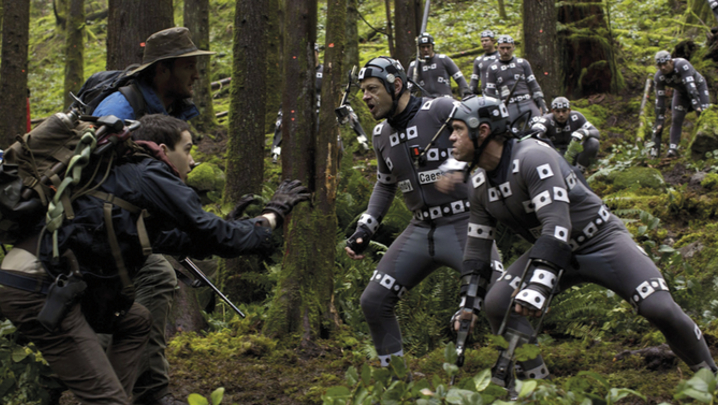Adrian Pennington looks at the big technology trends that will dominate September’s International Broadcasting Convention
September’s International Broadcasting Convention (IBC) will mark the transition from hype to reality for a wide range of transformative new technologies. Attendees of the week-long broadcasting conference and exhibition in Amsterdam will be able to assess the growing impact of Ultra-HDTV, big data and Cloud computing.
It is no coincidence that IBC has themed its entire conference as “The future of media in an age of disruption”.
The hardware to make programmes in the 4K version of Ultra-HDTV is now available, albeit at a hefty price. In the US, DirecTV has announced that it will follow Netflix into making Ultra-HDTV shows for the video-on-demand market. In the UK, BT TV has unveiled BT Sport Ultra HD, the first 4K channel in Europe.
Live 4K production became a practical possibility even more recently, with the arrival of cameras that can slot into existing outside broadcast workflows and use standard zoom lenses. All the main manufacturers – FOR-A, Grass Valley, Panasonic and Sony – have announced suitable models in the course of this year, with BT selecting the Sony version to shoot its live Ultra-HD work.
One element of the traditional camera chain that is still missing in 4K is live coverage from wirelesscameras. Existing 4K transmitters are simply too bulky to be mounted on a hand-held camera and the video signal latency (the delay while the signal is processed) is still too great to sync reliably with audio.
But that will change, as it did with HDTV, which suffered the same difficulties in its infancy, and possibly as soon as IBC.
With Futuresource Consulting predicting that 20% of UK homes will have a 4K-capable TV by 2018, a business case can be made for offering 4K content, if only to reduce churn among pay-TV subscribers (see box on page 28).
Having made big inroads into media archiving and distribution, Cloud computing is now pushing into non-live TV production. Cloud workflows rely on transporting video as packets of data over internet protocol (IP) networks (see box on page 28).
The ability to repurpose and deliver content to multiple screens more efficiently than with the bespoke equipment and tape-based workflows of old has been embraced on an enterprise-wide scale at Italy’s RAI, France’s Canal+ and Disney/ABC. All three companies will share their experiences in conference sessions at IBC.
The last step is live production. No longer an experiment, this is the most fundamental technical change to sweep broadcast in decades. Expect the first IP live production technology to be available to buy on the IBC exhibition floor (see box on page 27).
Big data is another buzz phrase that has been translated into genuine TV currency. The traditional, pre-sold, 30-second spot advert is under threat from real-time, automated ad trading based on big data about viewers.
Channel 4, one of the first broadcasters to introduce programmatic advertising, will share its experience at the IBC conference. Twitter will talk about how social media can trigger content discovery to create a new personalised programme guide.
One technology whose transformative potential remains the stuff of speculation, with only conflicting guestimates as to its likely commercial impact, is virtual reality (VR).
Even so, the format’s promise has caught the imagination, and IBC is reflecting this with a series of technology exhibits in its Future Zone, on the exhibition floor, and in the conference. For the latter, the focus is very much on VR – and its sibling, augmented reality – as a new creative storytelling medium.
There’s no doubt that VR content is sufficiently different to conventional programmes for it to be labelled a disruptive technology.
So, too, is the “internet of things”, the machine-to-machine communications network that is just beginning to seep into broadcasters’ business plans. For example, video content streamed to a home could be modified in response to data received from web-connected health and lifestyle-related gadgets in that building.
IBC will look at the threat to traditional broadcasters from content distributed by the likes of Netflix, YouTube and Amazon over the open internet as an OTT (over-the-top) service. One conference session poses the question, “Is video-on-demand the new broadcasting gold?”
Another session asks: “Is OTT simply broadcast rebooted?” The rhetoric behind these is clear. Over-the-top video could simply be broadcasting as we know it from now on.
Production Sports producers look for their 10%
The value of sport in driving pay-TV businesses is evident in the recent deals struck by BT Sport, which landed Champions League soccer from this season, and Discovery, which gained exclusive rights to the Olympics in Europe from 2022.
Both will feature prominently at IBC, with President of Discovery Networks International JB Perrette and Delia Bushell, Managing Director of BT TV and BT Sport, giving timely keynotes.
‘[Although] 90% of the technology we use is standard issue and established,’ says James Abraham, Director of Digital Strategy at Sunset+Vine Digital, ‘it’s how you weave in that 10% that makes the difference.’
His company broadcasts the Henley Royal Regatta using rugged, lightweight GoPro cameras on rowing boats and on drones over the Thames.
‘There’s always a lot of new stuff, but the tricky bit is deciding what to use and where to use it in an editorially relevant way,’ adds Abraham.
Gadgets aside, most of the innovation has been in the way in which live sports are presented digitally. Since London 2012, it is clear that the trend is for international sports events such as the Olympics to be consumed less on free-to-air, linear TV than on streams to mobiles, where viewers can pick and choose content, including camera angles, of their choice.
Sports programming that is distributed over the open internet is characterised as an OTT (over the top) service.
The production and packaging of sports offerings such as YouTube channel Copa90 and Whistle Sports (part-owned by Sky) will be discussed at IBC by executives from Major League Baseball and digital consultancy Seven League.
Data More Cloud on the horizon
Cloud computing is beginning to make significant inroads into certain genres of television production.
Two genres that particularly benefit from off-site, scalable computing resources and data storage are news reporting and observational documentaries.
The production workflows that make best use of the Cloud are characterised by the sifting of large amounts of footage to build storylines and the need to get on air fast.
Manufacturer LiveU targets the news gathering market. The specialist in IP-based, live video services is continuing to construct its Cloud network for hosting video captured by roving news crews on wireless cameras.
Panasonic camcorders offer a live video uplink to LiveU’s Cloud platform, the same platform used by Sky in May to live stream 150 feeds on election night in the UK.
Forscene and Aframe are among the vendors renting Cloud-based editing and review services to programme-makers. At IBC, film-maker Paul Kittel will explain how he transferred footage direct from camera into the Cloud and whittled down thousands of hours for Channel 4’s Born Naughty? series.
One of the most dramatic innovations to enter the mainstream over the past year is the drone. Affordable and (relatively) easily controlled miniature flying machines, coupled with a new breed of small HDTV and Ultra-HDTV cameras, have created a new tool that can capture stunning aerial viewpoints.
But a drone sitting on an exhibition stand isn’t that exciting, so IBC visitors will be able to see them in action in the Drop Zone, a ‘large outdoor flying cage’.
‘Imagine console-type camera angles, such as tracking overhead coverage of a football match or following a golf ball as the golfer hits it,’ suggests Jon Hurndall, co-founder of drone operator Batcam. Fox Sports used drones to cover the US Open golf for the first time this June.
Operators are also testing the practicality of carrying heavier, high-speed cameras, such as the Panasonic Varicam 4K or Phantom Flex4K, for super- slow-motion shots.
‘Drones are opening up new sports, such as mountain biking or surfing, which TV has not been able to cover before [as easily],’ says Jeremy Braben, owner of Helicopter Film Services.
IP communication Signal problems cause delay
The migration to Ultra-HDTV production is intimately linked to the IP (internet protocol) communications standard that is ubiquitous in the IT industry.
IP is less reliable than the broadcasting industry’s existing connectivity standard, SDI (serial digital interface).
However, a single SDI cable cannot handle the volume of data required by Ultra-HDTV, which, in its 4Kincarnation, is at least four times greater than that used in HDTV.
Transporting this data along a single gigabit ethernet cable using IP is a lot more efficient than routing it through four parallel SDI cables.
The trouble with IP in a live television environment boils down to timing. With SDI, engineers can guarantee that video emanating from one source (a camera, say) will arrive in sync at a particular end point, such as a vision mixer. This cannot be said about IP with the same degree of assurance.
‘It is much more difficult to see what’s going on in IP,’ says Tim Felstead, Head of Product Marketing at Quantel Snell. ‘Where SDI routers were very reliable, IP systems are more opaque. This creates risk and a lack of confidence.’
The cost advantages of IP are not limited to the price of cabling. Instead of ripping out and replacing equipment every time there’s a demand for new formats, an IP infrastructure can scale to accommodate leaps in frame rate or resolution, to Ultra-HDTV 8K and to anything beyond or in between.
Another cost saving is live, remote production. At IBC, equipment service provider Gearhouse Broadcastwill be demonstrating this by sending HD footage down a single 10Gb ethernet connection and editing the pictures on an IP-enabled switcher from EVS.
‘We’re increasingly being asked about remote production by customers,’ says Ed Tischler, Gearhouse’s Head of Projects. ‘It’s still very early days, but new technology means that we’re now in a position to offer remote production as a workable solution.’
Since live production is subject to on-the-fly changes to complex material – a late-breaking news story that includes a satellite link, for instance – it could be the best part of a decade before risk-averse broadcasters consign SDI to history.
Ultra-HDTV The pipeline starts to fill
Even before the first generation of Ultra-HDTV – 4K – has had its problems ironed out, equipment for the next generation is on its way.
Ultra-HDTV 8K – offering 16 times the resolution of HD – cameras and post-production equipment are being pushed by vendors such as Ikegami and Quantel. They have one eye on feature film production and the other on the Japanese domestic market.
Japanese broadcaster NHK is committed to adding 8K transmission by 2018, and the 2020 Tokyo Olympic and Paralympic Games will be covered in both Ultra-HD 4K and 8K.
One of the bodies shaping the development of Ultra-HDTV is the Ultra-HD Forum, an alliance of manufacturers that includes Dolby, Ericsson, LG and Sony.
‘Ultra-HDTV is now entering a phase where content, technology and consumer experience have to be aligned,’ says the forum’s President, Thierry Fautier.
The forum is establishing guidelines for the implementation of a broad range of new Ultra-HD technologies.
Abbreviations that we can expect to see stickered on consumer kit in the near future include WCG (widecolour gamut), HDR (high dynamic range), HFR (high frame rate) and NGA (next generation audio).
An indication of the importance of HDR is that IBC has awarded its 2015 Conference Prize to a paper from two BBC R&D staffers, Andrew Cotton and Tim Borer, for their report, ‘A display-independent, high-dynamic-range television system’.




